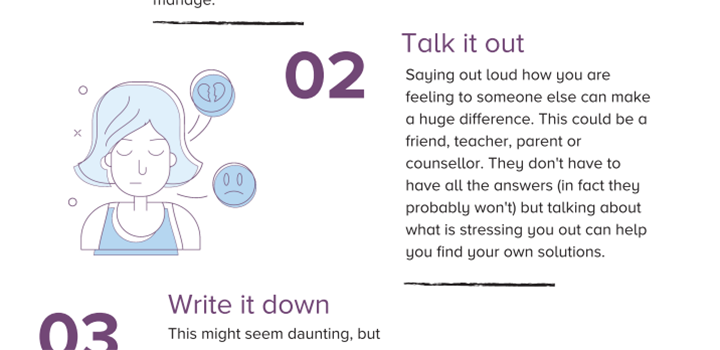Learning intentions
- Practice techniques for managing different feelings
- Explore which techniques might work best.
Junior cycle and Senior cycle
40 mins
Minding myself and others
Self-awareness and personal skills
SE Communication
Understanding and validating feelings

Jen Trzeciak, a former clinician with Jigsaw, describes the emotional and physical aspect and the thoughts, behind a feeling.
Watch this video in class and ask students to discuss what they just saw, write down reflections or answer questions from the discussion prompts below.
Ask the class how much they agree or disagree with the following statements. Ask for reasons for decisions and facilitate a discussion around this.
(1) You should always try to feel happy.
(2) There is no such thing as a bad feeling.
(3) Feelings are temporary.
(4) Avoiding your feelings is bad.
ACE technique

The ACE technique is a tool for grounding when caught up with difficult thoughts or feelings.
‘A’ refers to accept how you are feeling
‘C’ refers to come back into your body
‘E’ refers to engage fully with what you are doing.
4x4 breathing

4×4 breathing is a technique that supports us to slow our breathing. This encourages our heart rate to drop telling our body and brain it’s OK to relax. We then start to feel more calm.
Ask the class to follow the animation, encouraging them to breathe deeply from the belly.
Class discussion
After trying both techniques as a class, invite students to compare and contrast between the ‘ACE’ technique and 4×4 breathing.
Below are some questions to begin the discussion:
- What did you like/dislike about the ‘ACE’ technique?
- What did you like/dislike about 4×4 breathing?
- Did you notice any difference in how you felt, emotionally or physically, after each exercise?
- Which technique would you be more likely to use in a stressful situation?
- Do you know of any other techniques that can be helpful for managing difficult feelings?

Managing anxiety

How to deal with stress




